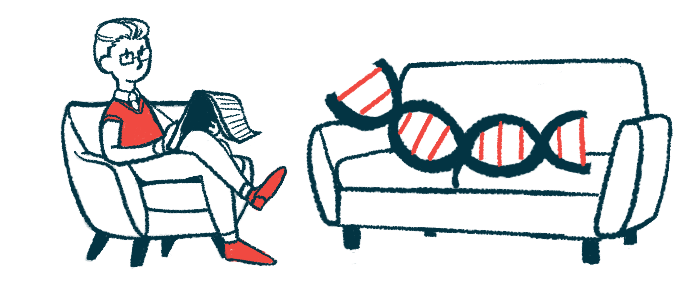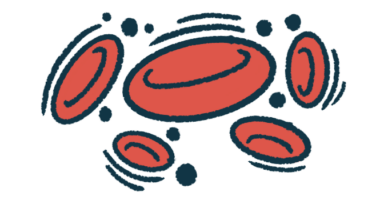Cyclosporin H boosts uptake of gene therapy in SCD newborn stem cells
Blocking immune responses that suppress lentivirus delivery helps GLOBE-AS3

Adding cyclosporin H to a new lentivirus-delivered gene therapy with enhanced anti-sickling properties boosted the uptake of genetic material in blood stem cells from newborns at risk of sickle cell disease (SCD), a preclinical study reports.
With more genetic material inside stem cells, the therapy generated therapeutic levels of healthy hemoglobin, the protein that’s faulty in SCD, without impacting stem cell health and the development of new blood cells.
“This is an exciting advancement for both … gene therapy in general and for improving treatment for patients with sickle cell disease specifically,” said Thomas Gallagher, PhD, in a press release. Gallagher is with the University of Massachusetts Chan Medical School and is managing editor of Human Gene Therapy, which published the study. The study is titled, “Cyclosporin H Improves the Transduction of CD34+ Cells with an Anti-Sickling Globin Vector, a Possible Therapeutic Approach for Sickle Cell Disease.”
In SCD, mutations in the HBB gene lead to a faulty version of hemoglobin, the protein that carries oxygen in red blood cells, being produced. Mutated hemoglobin tends to form clumps, causing red blood cells to adopt a sickle-like shape, making them rigid and more prone to getting stuck in blood vessels. This can restrict or obstruct blood flow and trigger painful vaso-occlusive crises (VOCs).
Two gene therapies have been recently approved in the U.S. for SCD: Casgevy (exagamglogene autotemcel) and Lyfgenia (lovotibeglogene autotemcel). Both involve collecting a patient’s hematopoietic stem cells (HSCs), precursor cells that give rise to all types of blood cells, editing them to boost the production of a functional version of hemoglobin, and returning them to the patient.
Casgevy uses the gene-editing technology CRISPR/Cas9 to boost the production of fetal hemoglobin in HSCs. Lyfgenia provides a modified HBB gene, delivered to HSCs using a lentivirus carrier, that’s capable of producing a form of hemoglobin called HbA-T87Q with anti-sickling properties. It remains unclear if these gene therapies will be available for all SCD patients, however.
“It is therefore important to continue developing effective gene therapy strategies for this disease,” the researchers wrote.
Blocking immune response to boost SCD gene therapy
Scientists have also developed GLOBE-AS3, a candidate gene therapy similar to Lyfgenia, but with a modified gene that encodes a form of hemoglobin called HBAS3 that contains additional anti-sickling modifications, T87Q like Lyfgenia, along with G16D and E22A. These modifications were added to better prevent hemoglobin clumping and red blood cell sickling.
In preclinical studies, the uptake, or transduction, of GLOBE-AS3 into HSCs reached as high as 80%, with the modified hemoglobin potentially reaching therapeutic levels in red blood cells derived from these HSCs. While encouraging, the levels of GLOBE-AS3 uptake in HSCs using lentivirus delivery remained a limiting factor, according to researchers.
One approach to improving gene therapy uptake is to block immune responses that suppress lentivirus delivery, which has been identified as an especially active restriction mechanism in HSCs. Cyclosporin H is an immune suppressive molecule that can overcome this restriction.
Here, the researchers tested whether cyclosporin H could improve GLOBE-AS3 uptake in HSCs.
As a model system, the researchers first tested a lentivirus that carried a gene encoding a green fluorescent protein (GFP), which can easily be visualized. Adding cyclosporin H increased GFP gene activity in HSCs and the number of gene vector copies per HSC. At the same time, HSCs remained healthy and functional. Moreover, red blood cell precursors generated from HSCs remained unaffected unless a high vector copy number was reached.
In subsequent experiments, researchers used HSCs from the umbilical cord blood of newborns with one or two HBB gene mutations who took part in the DREPACORD study (NCT03876821), which collected cord blood from newborns at risk of SCD to support gene therapy development.
As in previous experiments with GFP, GLOBE-AS3 lentiviral uptake was markedly enhanced by cyclosporin H, with a gene vector copy per cell number greater than 2. Consistently, therapeutic levels of modified hemoglobin were detected and the process had no impact on red blood cell precursors.
“This preclinical study provides highly encouraging data for an improved efficiency of HBAS3 transduction and production and could be further developed within the regulatory recommendations for human applications of gene therapy in SCD,” the researchers wrote.







